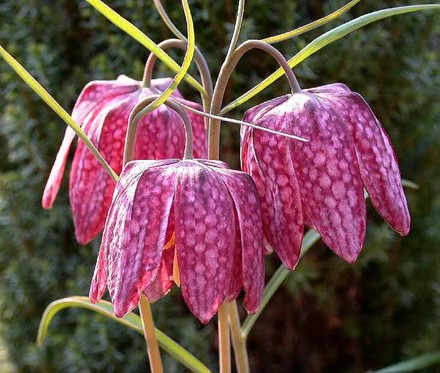Adding New Flowers to the Spring Garden
By Jos Van Hage

Not as well known as other spring flowers, the fritillaria meleagris offers colour and unusual beauty.
Adding color, fragrance and beauty to the spring landscape is done in the fall by planting spring flowering bulbs now.
September is the best time of year to plant all your spring flowering bulbs. Some of the more well known bulbs include narcissus, tulips, crocus, hyacinth, and snowdrops, but why not try some of the lesser known bulbs that are equally beautiful.
A favorite of mine is the ‘Fritillaria Meleagris’. It is a hardy (zone 3) bulb that grows very well in our area. I have had some planted in our landscape for 7-8 years and they come back and bloom beautifully every spring. They are easy to grow, require very little maintenance, and are not bothered by rodents. Fritillaria are a member of the lily family and bulbs produce 12-18 inch stems that bear 1-3, two inch, bell shaped flowers. The flowers are checkered and veined and are reddish brown, purple, or white Plant the bulbs in a rich, moist soil, in sun to light shade. They can be planted in groups or you can plant them scattered in a naturalized landscape. After the bulb has finished blooming allow the foliage to die back naturally. They also self seed easily giving you more blooms in years to come. After the foliage has died you can also divide, separate, and replant the bulbs immediately, if they need to be divided because of overcrowding. When purchasing the bulbs you want to plant them right away as they tend to dry out quickly.
Previous Story - Next Story
Return to Home









Peace :-)
V.